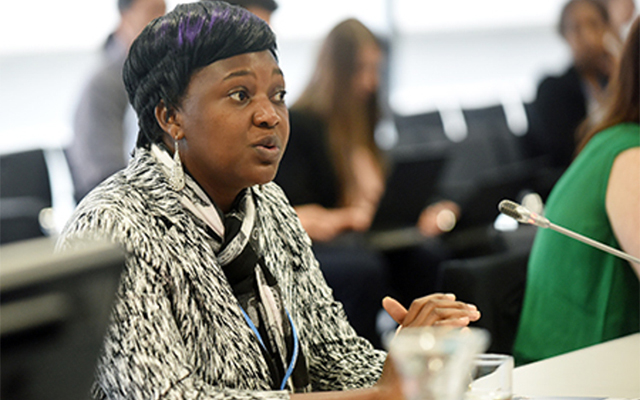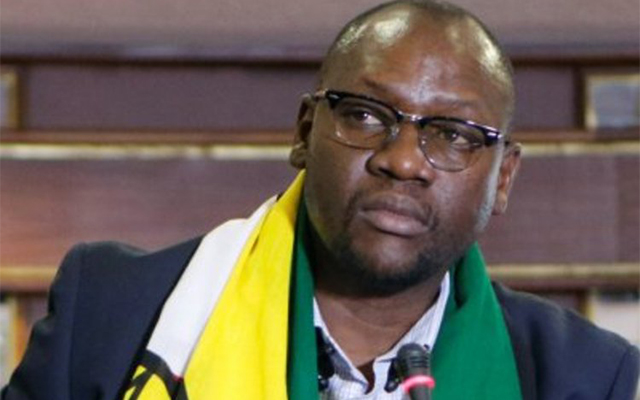Three local climate projects approved


Veronica Gundu
Jeffrey Gogo Climate Story
ZIMBABWE has received approval for three climate projects that could see the nation reverse some of the dangers caused by climate change in sectors such as water, agriculture and manufacturing.
Elisha Moyo, principal climate change researcher in the Environment, Water and Climate Ministry, told The Herald Business that the approval by the Climate Technology Centre and Network (CTCN) “will remove technology barriers” that impede adaptive actions.
The CTCN — the operational arm of the technology mechanism under the UN’s climate convention — offers legal and policy expertise, technical training and technology transfer support to willing developing countries keen to achieve low-carbon growth.
In 2015, Zimbabwe made three requests for such kind of assistance.
One request centres on the development of a climate-smart agriculture manual for agriculture education; the other on water use and industrial efficiency; and lastly, as it turns out, Zimbabweans — with all their education — need help drafting bankable climate proposals.
Zimbabwe is widely regarded as Africa’s most educated country.
“People have been talking about climate-smart agriculture without contextualising it to Zimbabwe,” said Mr Moyo, by telephone, adding the Ministry was prioritising development of the agriculture manual.
The first consultative workshop on it will be held on July 26, he said, seeking to highlight the thematic areas, the kind of technology to be promoted and that which should be put to sleep. Climate-smart could refer to actions that minimise the impacts of climate change on livelihoods, eco-systems and bio-diversity.
“You hear people talking about reviving certain irrigation schemes, some of them should just be put to rest because they are not climate-smart,” says Mr Moyo.
“You cannot talk of efficient irrigation in some parts of Masvingo, for example, where dam levels are almost always low. This is what makes irrigation a climate issue rather than a development issue. We cannot continue doing things the way we were doing in the past . . . we need to incorporate the changes in climate in the design and in practice.”
According to the Agriculture Ministry, Zimbabwe has about 200 000 hectares of crop under irrigation against a potential of 5 million hectares.
Most of the irrigation equipment countrywide is run-down, authorities say.
Hailed by experts as an effective tool for combating climate change-linked rainfall shortages, irrigation has failed to deliver where it mattered most, leaving most smallholder Zimbabwean farmers — poorly grounded in climate change — facing hunger as rain-fed crops falter.
Over 4 million people are in need of food aid this year following a catastrophic cropping season last summer that decimated harvests by more than half due to El Nino.
Government has already appealed for $1,6 billion in aid to help tame the hunger. Mr Moyo said the agriculture manual will be used in agriculture colleges, by Government, NGOs and others, but it needed to be clear how exactly it will help Zimbabwe adapt to climate change.
“What does this (climate-smart agriculture manual) mean to someone in a hot area like Chiredzi?
“What does it mean when it comes to irrigation? Should we be moving away from water inefficient systems like flood irrigation in hot areas?” Mr Moyo quipped.
According to the request submitted to the CTCN in 2015, the “manual will be integrated into all national agriculture learning curricula and shall form a standard approach or intervention against climate change and promoting sustainable development.”
Further, its development is expected to equip extension workers and farmers with capacity and knowledge that could boost agriculture output and incomes, and cut greenhouse gases emissions at a time of climate change.
Poor project proposals
Then there is the second of the approved requests — project writing. Zimbabweans need sharp training on project planning, management, implementation and others — a lack of skill in these areas meant that little has come in the way of funding of projects that help people cope with dangerous climate impacts.
“We have realised that we have a lot of ideas; a lot of institutions with money but, as a country, we have not been able to tap into those funds, partly because our writing skills and ability to translate those ideas into bankable projects is very low,” lamented Mr Moyo.
“Funders do not look at your emotions, they look at what you write and how your ideas are packaged. We hope that with assistance from the CTCN, this component will be taken care of.”
As actions to limit climate risks pick up pace, concerns have lingered over the country’s ability to mobilise funds for its $10 billion-worth adaptation and mitigation strategy.
For example, by June 2013, Zimbabwe had received just $6,7 million or 0,7 percent of the $964 million climate funding accessed by nine other economies in Southern Africa, due in part to the absence of a clear-cut implementation strategy.
This means the country will have to do more to improve its chances of attracting investment in the climate sector, funds coming from numerous sources including the World Bank, Global Environment Facility, the UN’s Adaptation Fund, the Green Climate Fund (GCF), the African Development Bank (AfDB), and others.
However, Zimbabwe has started developing an institutional framework that enables it to benefit from the different funding options available for climate change, said Veronica Gundu, deputy director for climate change in the Climate Ministry, in a previous interview.
To this end, the Ministry has been accredited by the UN as the National Designated Entity — a regulator that is responsible for submitting all private and public funding proposals to the GCF, a UN financial mechanism.
To do that, the country must also have accredited implementing entities that meet up with the Fund’s fiduciary standards — the Scientific Industrial Research and Development Centre (SIRDC) has since been accredited as one such entity.
Accreditation is crucial to ensuring transparency, accountability, monitoring, reporting and evaluation for any money disbursed.
“The third request talks about industrial energy efficiency and water-use efficiency,” said Moyo.
“For example, and according to world standards, it takes about seven litres of water to make a litre of beer.
In Zimbabwe a litre of beer is made from between 14 and 16 litres of water.
“With each litre, more coal is being put into the furnace, more water drawn from the dam . . . it’s an entire chain that results in more emissions, more industrial waste and water shortages. In view of climate change, we intend to look at energy and water efficiency use in industry.”
Zimbabwe accounts for just 0,45 percent of the global greenhouse gas emissions total, but in the spirit of curbing global temperature rise to under 2 degrees Celsius, the country intends to cut emissions by 33 percent by 2030 under a business as usual situation if it receives international financial support to achieve those targets.
God is faithful.










Comments